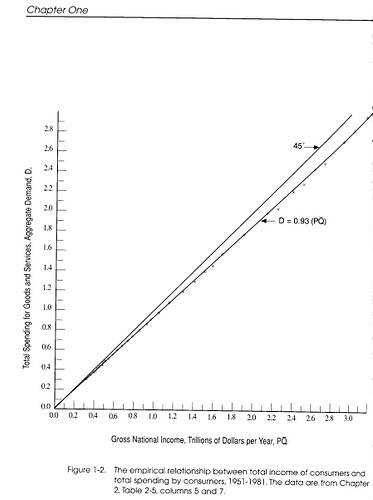[From Frank Lenk (2009.09.21.16:57)]
I apologize for forgetting to time stamp my previous post, as
per convention on this list.
Frank
···
From: Control Systems
Group Network (CSGnet) [mailto:CSGNET@LISTSERV.ILLINOIS.EDU] On Behalf Of Richard
Marken
Sent: Monday, September 21, 2009 10:59 AM
To: CSGNET@LISTSERV.ILLINOIS.EDU
Subject: Re: [CSGNET] money and PCT
[From Rick Marken
(2009.09.21.0900)]
Frank Lenk (2009.09.20.22:55)
Until I can break free to respond with my own thoughts, I wanted to pass
along an old article (1913, I think) that according to my macroeconomics
professor is one of the best articles ever written on money.
I like it! It seems completely consistent with my (naively derived) view of
money as a symbol representing the exchange value of goods and services.
It certainly is consistent with my idea that money need have no intrinsic
“value” at all; paper and computer bits work as well as (or better
than) gold. I was focusing mainly on the “price” aspect of money; the
article makes the important point (which will be very important for modeling, I
think) that the money itself is a claim on goods; an IOU or “credit”.
So $100 is a claim on $100 worth of the goods and services produced by the
economy. The market has put a price tag on all goods and services (that are
available for exchange) so my $100 means that I can scoop up goods and services
with a total price of no more than $100. And when I hand my money to the people
from whom I purchase the goods and services, they are now getting IOUs that
they can use to exchange for the goods and services. So money is a symbol for
goods that have not yet been consumed. But that creates a problem; when I spend
my money (consume products) the money doesn’t get consumed, too; it goes to the
person who provided me with the goods/services. That person now has money representing
goods/services that no longer exist; this money can be used to get new goods
and services; but how do we know they are there? This is a problem I never
considered. Yikes. I must be making some kind of elementary mistake here. What
gives?
Best
Rick
–
Richard S. Marken PhD
rsmarken@gmail.com
www.mindreadings.com
